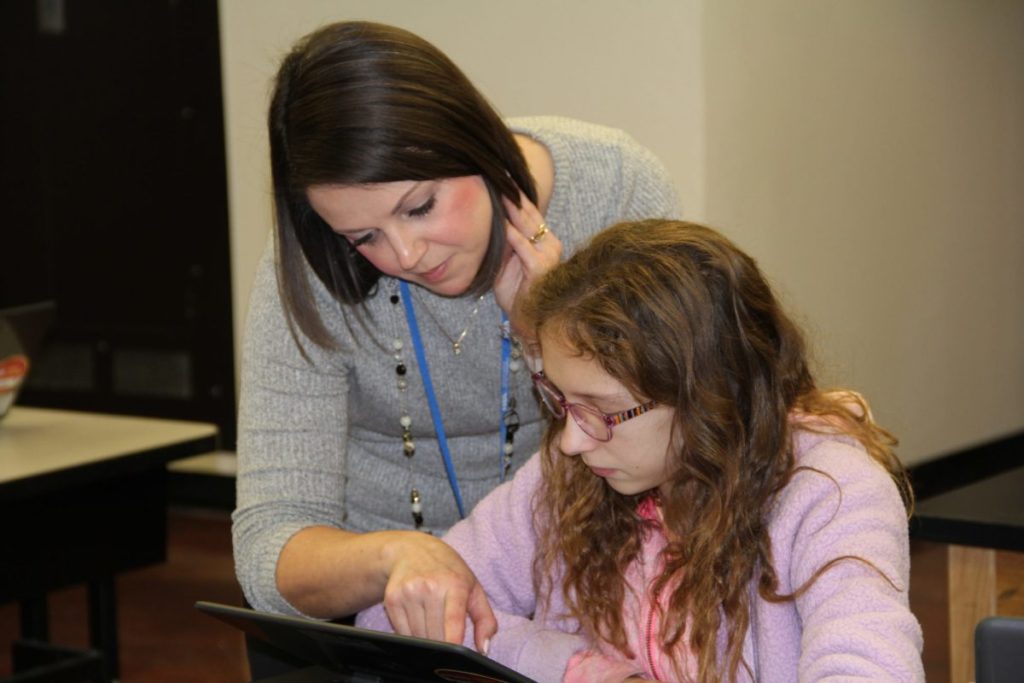I do not like it. I find myself getting distracted much easier and find myself procrastinating more and more. A lot of the time, I get confused. I don’t have the luxury of being able to ask my teacher why I need to do different when I don’t understand something or don’t know what to do and a lot of the time, an email doesn’t get back to me in the time I am completing my work.
There’s no structure, which is making it hard to get up and be productive. Overall, online school makes time management extremely difficult and I feel like I’m not even learning in some of my classes.
Everyday my motivation to do my work decreases and recently all my assignments have been turned in late causing my grades to drop.
These are comments (collected by the NY Times) from American high school students about big problems with remote instruction during school closures. While some kids actually prefer it (“with the new shift to online schooling, I feel like an adult working from home”), many feel distracted, frustrated, and isolated.
In this context I started to think about my visit to New Egypt High School early in March before schools shut down. There, teachers have been using a digital platform called Summit Learning (a free product developed by the Chan Zuckerberg Initiative*) that fosters deep connections between teachers and students through a mentoring system.
How is the platform holding up? Are the students at New Egypt high school experiencing the same challenges as other schools, three months into remote instruction? Are there lessons to be learned during this crisis from a system that partners personalization with digital learning?
Time for a second visit (via Zoom) to a rural section of New Jersey for a chat with Principal Rick DeMarco and teachers Tara Richards (Algebra 1, Algebra 2, Pre-Calculus) and Sean Feddema (social studies). I wanted an insider’s view of how closures have affected a school where the digital divide doesn’t exist —the platform ensures that every student has a laptop and broadband access— and technology is thoroughly integrated into the curriculum.
Newsflash: Right now everything is different at New Egypt High School. Yet there is much to be learned here, especially in New Jersey where some students, disproportionately low-income, are completely disengaged from remote schooling. Here’s my take.
The Summit Learning platform has been an essential tool in pivoting to home instruction. Richards, the math teacher, is a mentor for freshman students who are relatively new to the platform but, she said, “the platform has saved me. When I started out I was using Google Classroom but it was a nightmare. If I commented on a student’s work they didn’t even know how to see the comment because there was no ‘alert.’ There was too long a lag. Now I’m using Summit and I just go in and highlight an error, give them constructive feedback, they immediately get an alert, and respond.” She added, “actually, now it’s more personalized. I can differentiate so much more deeply.”
Principal DeMarco noted, “if we didn’t have the platform we’d lose the ease by which we can provide meaningful feedback. In addition, there are enormous teacher-developed resources banked in Summit.” Feddema concurred: “With history, there’s a need for all these resources but there’s no overload of documents. It’s so much more user-friendly for kids; they can just go and see what they want to do.”
While the students are benefitting academically, the workload on teachers is immense. “My husband comes in and waves to me, “ says Richards. “I don’t have any prep time so I give myself permission on each school day to not work for a half hour.” Feddema’s day doesn’t end at 3:15. “I’m still available after that,” he says. “The soccer coach and I have put together a podcast from 6-7 in the evening where we break down film of previous games and have alumni come in and talk about it. So our kids are still, in a different way, getting sports.”
In response to teacher stress, DeMarco said, “we’ve pivoted. We were going Monday through Friday from 8:15 to 3:15. Now we’ve adjusted our schedule and every Friday is catch-up day.” Teachers still have office hours and students can log onto virtual field trips put together by department heads.
Scaffolding — breaking up a lesson, concept, or skill into small discrete parts —is more important than it was before, and, in itself, leads to more personalized instruction, even during coronavirus school closures.
How important? “I’m doing much more scaffolding,” says Feddema. “That’s how I try to replace being in the classroom with my kids. And I’m working a lot with students one-on-one. If they have a question, I send them a google meet link and we work out what they need together.”
And this intense differentiation has an impact on how quickly the school moves forward with new instruction. “As an administrator I struggled with how much we should push ahead,” confessed DeMarco. “In this situation we have to move more slowly because we have to do more scaffolding. While we’ve been pushing ahead, it’s with the understanding that it has to look differently, has to be paced differently. We pull certain items offline because it won’t work without a teacher in the room with students. Some of our families are struggling — there are kids working during the day because their parents are unemployed —and we have to walk a delicate balance between pushing ahead and out student/teacher/administrator stress level.”
He added, “the whole hierarchy of needs is so much more important. We are very tempered in how we push ahead.”
Feddema gave me an example.. “If a kid wants to meet with me live, I’ll do it,” he says. “Or we’ll do a 30-minute interactive workshop, breaking things down into more steps, doing more scaffolding. Or a student can look at my youtube channel and independently figure out the concept. There are multiple versions of myself available. We’re all thinking out of the box.”
“I always have a video and always provide notes,” said Richards. “Every Monday and Wednesday I have an optional live lesson but when we did graphing — that’s a really hard concept — I made it mandatory. I can be a real mama bear!”
And let’s not forget the parents: Through an app called ParentSquare, adopted earlier by New Egypt, moms and dads can see what students are responsible for each day and teachers can reach out to parents when students seem unengaged.
There is much concern about students’ mental health.
“They need consistency,” said Richards. “Remote instruction — even with Summit — doesn’t replace a teacher who is face-to-face with you. Nothing replaces a teacher, and we know that more than ever. Definitely, students are struggling.”
The mentoring component of Summit where mentors meet one-on-one with their 15 mentees is even more important than it was before. “It’s not just academic,” says Feddema, “and sometimes the kids just need someone to talk to. We discuss life, whatever is going on, and we’re just a familiar face in the middle of all this. All the teachers are doing it. I’ve had some really meaningful discussions with my mentees.”
“I continue to be concerned about my students’ mental health,” reported DeMarco. “We still try to do fun things, and I know my teachers are doing tons of things I don’t even know about, especially for our seniors. But this is so hard. To learn and teach in your home is really difficult. We’re trying to manage stress levels, fear levels.”
“I want the kids to realize,” said Richards, “how much we care about them.” “I check my email every 30 minutes,” says Feddema. “I tell them, we’re waiting for you to email us!”
While Summit Learning has clearly eased the transition to home instruction and facilitated New Egypt’s ability to continue learning, says DeMarco, “this situation truly dispels any thought that the computer is the end-all-be-all, that kids can teach themselves because of technology. These kids can’t. They need teachers. Nothing replaces the face-to-face in a classroom or walking down the hall with your friends. Technology is just a tool. The platform is just a bank of resources. We’d rather be in school.”
*(The Chan Zuckerberg Initiative provides some funding to brightbeam; brightbeam supports this blog.)






1 Comment